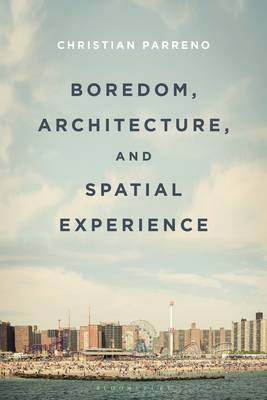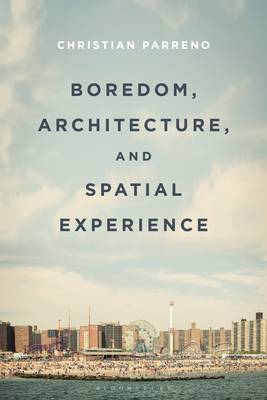
Je cadeautjes zeker op tijd in huis hebben voor de feestdagen? Kom langs in onze winkels en vind het perfecte geschenk!
- Afhalen na 1 uur in een winkel met voorraad
- Gratis thuislevering in België vanaf € 30
- Ruim aanbod met 7 miljoen producten
Je cadeautjes zeker op tijd in huis hebben voor de feestdagen? Kom langs in onze winkels en vind het perfecte geschenk!
- Afhalen na 1 uur in een winkel met voorraad
- Gratis thuislevering in België vanaf € 30
- Ruim aanbod met 7 miljoen producten
Zoeken
€ 69,45
+ 138 punten
Omschrijving
Boredom is a ubiquitous feature of modern life. Endured by everyone, it is both cause and effect of modernity, and of situations, spaces and surroundings. As such, this book argues, boredom shares an intimate relationship with architecture-one that has been seldom explored in architectural history and theory.
Boredom, Architecture, and Spatial Experienceinvestigates that relationship, showing how an understanding of boredom affords us a new way of looking at and understanding the modern experience. It reconstructs a series of episodes in architectural history, from the 19th century to the present, to survey how boredom became a normalized component of the everyday, how it infiltrated into the production and reception of architecture, and how it serves to diagnose moments of crisis in the continuous transformations of the built environment.
Erudite and innovative, the work moves deftly from architectural theory and philosophy to literature and psychology to make its case. Combining archival material, scholarly sources, and illuminating excerpts from conversations with practitioners and thinkers-including Charles Jencks, Rem Koolhaas, Sylvia Lavin, and Jorge Silvetti-it reveals the complexity and importance of boredom in architecture.
Boredom, Architecture, and Spatial Experienceinvestigates that relationship, showing how an understanding of boredom affords us a new way of looking at and understanding the modern experience. It reconstructs a series of episodes in architectural history, from the 19th century to the present, to survey how boredom became a normalized component of the everyday, how it infiltrated into the production and reception of architecture, and how it serves to diagnose moments of crisis in the continuous transformations of the built environment.
Erudite and innovative, the work moves deftly from architectural theory and philosophy to literature and psychology to make its case. Combining archival material, scholarly sources, and illuminating excerpts from conversations with practitioners and thinkers-including Charles Jencks, Rem Koolhaas, Sylvia Lavin, and Jorge Silvetti-it reveals the complexity and importance of boredom in architecture.
Specificaties
Betrokkenen
- Auteur(s):
- Uitgeverij:
Inhoud
- Aantal bladzijden:
- 272
- Taal:
- Engels
Eigenschappen
- Productcode (EAN):
- 9781350213647
- Verschijningsdatum:
- 25/08/2022
- Uitvoering:
- Paperback
- Formaat:
- Trade paperback (VS)
- Afmetingen:
- 156 mm x 234 mm
- Gewicht:
- 385 g

Alleen bij Standaard Boekhandel
+ 138 punten op je klantenkaart van Standaard Boekhandel
Beoordelingen
We publiceren alleen reviews die voldoen aan de voorwaarden voor reviews. Bekijk onze voorwaarden voor reviews.









